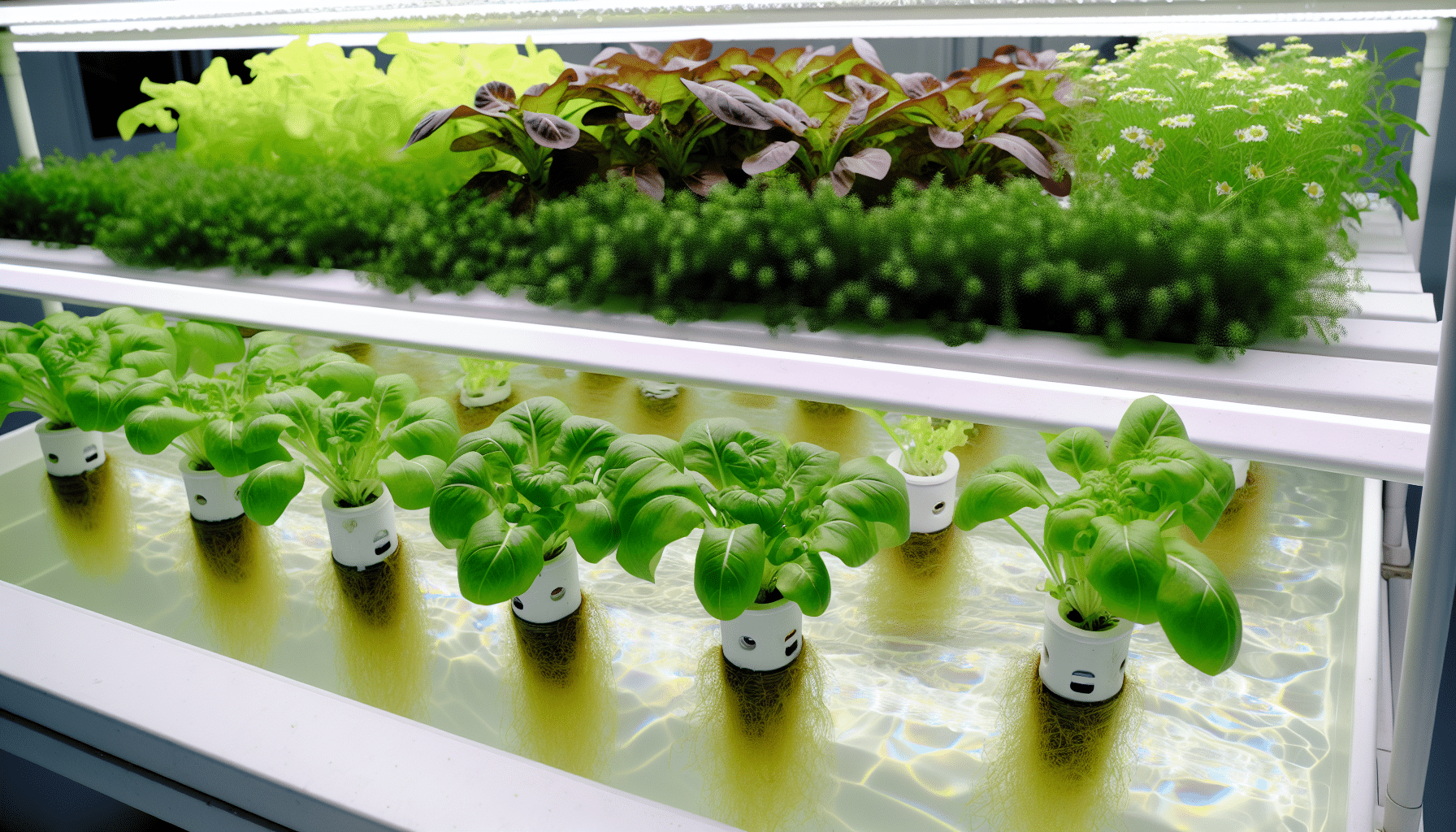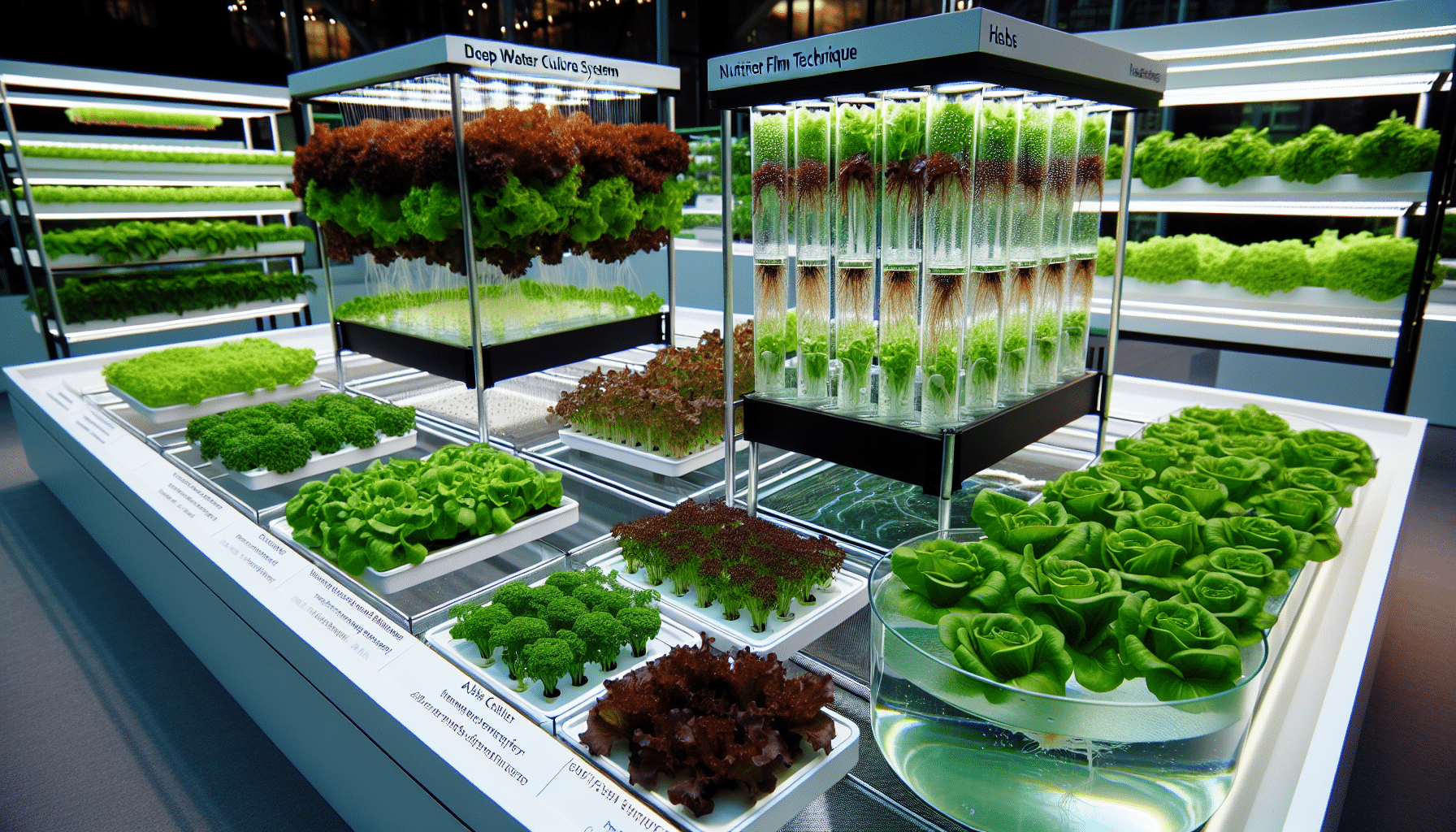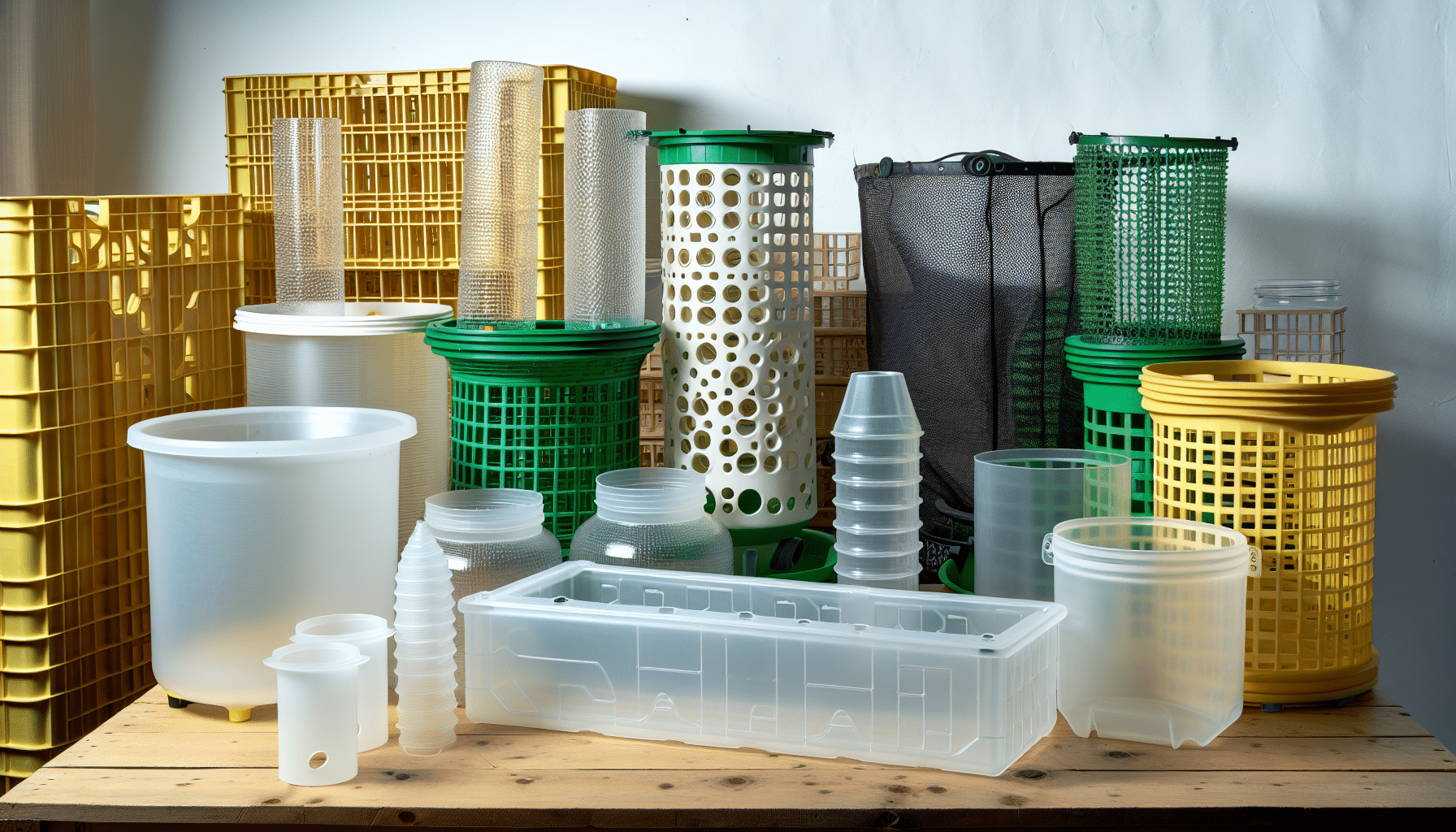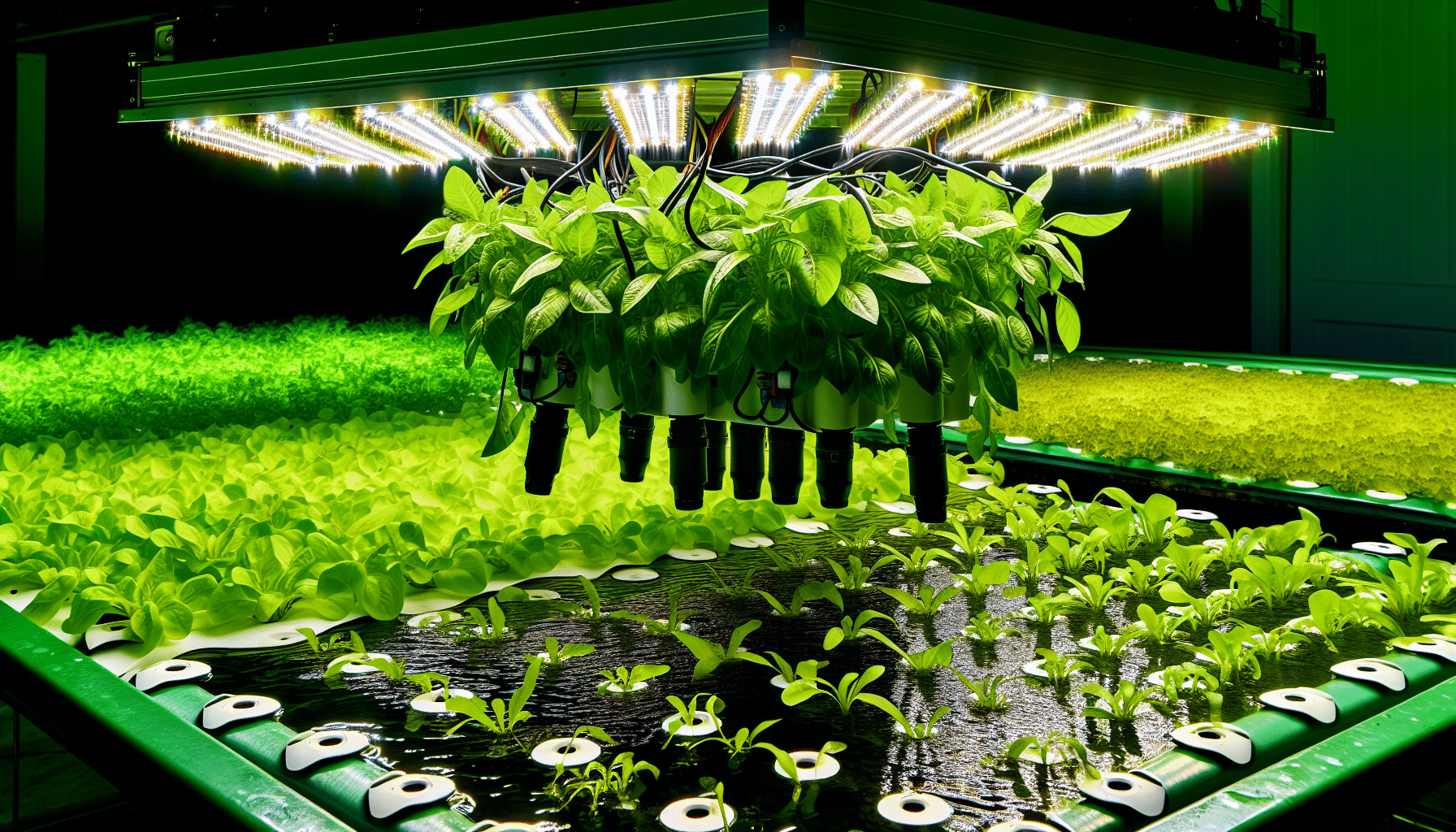Sitewide Sale: Use code Get5Nutra for 5% OFF all products. FREE shipping & 30-Days Hassle-Free ReturnsShop Now
Dive into hydroponic farming at home, a sustainable solution for growing plants without soil. Our guide provides you with everything you need to get started, from understanding the basic principles to building your system. Whether you’re in a small apartment or have plenty of space, we’ll help you navigate the process with ease and grow your favourite plants indoors.
Hydroponic farming is a soilless cultivation method which allows precise control over conditions and direct nutrient access, leading to higher yields, reduced water usage, and minimized pesticide needs.
There are various hydroponic systems suitable for different plants and experience levels, including Deep Water Culture for leafy greens, Nutrient Film Technique for small plants, and Ebb and Flow system for versatility and adaptability.
Successful hydroponic farming requires essential equipment like containers, growing mediums, air pumps for aeration, and balanced nutrient solutions, with careful attention to temperature and lighting conditions for optimal plant growth.

The roots of hydroponics trace back to ancient civilizations like the Hanging Gardens of Babylon, where lush greenery thrived without traditional soil-based cultivation. Hydroponic gardens involve growing plants in a water and nutrient solution, a soilless method that ensures plants receive their essential nutrients directly for thriving growth.
Unlike traditional farming, hydroponics offers numerous advantages such as:
Higher yields
Decreased water usage by up to 98%
Minimal need for pesticides
Faster plant growth due to direct nutrient access
The controlled environment of hydroponic farming allows for precision adjustments of factors like temperature, pH, and nutrient levels, making it easy to replicate successful growth formulas.

Similar to how a gardener selects the ideal seed for a particular soil, a hydroponic gardener must carefully pick the most fitting system for their home. There are multiple types of hydroponic systems, each with its unique advantages and considerations. We will delve into the specifics of the Deep Water Culture, Nutrient Film Technique, and EBB and Flow systems, aiding you in finding the most suitable match for your indoor garden.
The Deep Water Culture (DWC) system is a popular choice among hydroponic gardeners due to its simplicity and effectiveness. This system submerges plant roots in an oxygenated nutrient solution, promoting rapid growth, especially for leafy greens such as lettuce, and kale, and herbs like basil. Deep water culture systems, including those designed for cucumbers like mini cocktails and American slicer types, are well-suited for hydroponic cultivation.
A variation of DWC, known as Bubbleponics, enhances the system by adding a water pump within the reservoir to deliver nutrients directly to the plant bases, boosting early root growth. On the other hand, the Kratky Method is a passive approach to DWC that forgoes electrical pumps for a simpler, low-tech setup that’s ideal for areas with limited power. Both methods, along with recirculating DWC for larger-scale gardening, make DWC a versatile and beginner-friendly hydroponic system.
The Nutrient Film Technique (NFT) is a hydroponic system method where the roots of plants are in contact with a thin film of nutrient solution. This setup provides efficient nutrient and oxygen absorption, making it suitable for smaller, quick-growing plants. However, keep in mind that the NFT system demands frequent maintenance to avoid the blockage of nutrient channels by root systems.
Additionally, the system is vulnerable to pump failures that can lead to rapid drying out of the roots. Despite these considerations, the NFT system’s efficient nutrient and oxygen absorption makes it a solid choice for growing smaller plants that mature quickly.
The Ebb and Flow system, known for its simplicity, low cost, and adaptability, is another excellent option for hydroponic gardening. This system floods the growing medium with a nutrient solution before draining it back into the reservoir, providing plants with the necessary moisture and aeration. Hydroponic production systems like the Ebb and Flow system are becoming increasingly popular among gardeners.
This system offers flexibility, allowing you to adjust flood and drain cycles to support different plant sizes and growth stages. However, be mindful that the Ebb and Flow system may cause roots to entangle when several plants are grown in a single container, potentially complicating the removal of individual plants.
Now that you have grasped the diverse hydroponic systems, it’s the perfect moment to assemble your gardening tools! Essential equipment for your hydroponic garden includes:
Containers
A suitable growing medium
Air pumps for aeration
Nutrient solutions
Depending on the specific hydroponic method you choose, you may need additional specialized materials.
The first thing you’ll need for your hydroponic garden is containers. An opaque container or bucket, such as a 5-gallon bucket or plastic storage bin, can serve as a water reservoir. The size of your container should depend on the types of plants you wish to grow, and it should be designed to block light to prevent algae growth.
For holding and supporting the plants, you can use net pots. These come in various sizes, and you can select the size based on the mature plant’s size and weight. If net pots are unavailable, you can consider alternative containers such as foam cups, plastic bottles, plastic cups, and gardening containers, but these may require modification to create holes or slits for proper water, nutrient, and air circulation.
Also Read:

A suitable growing medium is essential in hydroponics to anchor plant roots and facilitate access to nutrient solutions. Common growing mediums include:
Rockwool
Perlite
Peat moss
Coconut fiber
Expanded clay pellets
Each medium has unique properties, such as coco coir’s excellent air-to-water ratio or hydroton’s pH neutrality and oxygen balance.
In the case of Rockwool cubes, they require soaking in pH-balanced water before planting to adjust their pH and hydrate the medium. Remember, when handling rockwool, it’s recommended to wear dust masks to avoid inhaling particulates.
To promote healthy plant growth, it is imperative to maintain a nutrient solution abundant in dissolved oxygen, which is vital to ward off root rot. To oxygenate the water in a hydroponic system, an air pump with an air stone attached is commonly used. These tools are essential equipment for ensuring the water remains oxygen-rich, particularly in DWC setups.
When selecting an air pump, consider the volume of the nutrient reservoir and opt for pumps that supply at least 500-600cc (ml) of air per minute. Furthermore, quieter pumps contribute to a more peaceful indoor garden environment. Along with the air pump, you’ll need high-quality, black airline tubing to prevent algae growth, with smaller bubbles from air stones aiding better oxygen dissolution within the water.
Your plants require nutrient solutions that offer a balanced mix of essential nutrients, such as:
Nitrogen
Phosphorus
Potassium
Trace minerals like iron, calcium, and magnesium
These nutrient solutions can be pre-made or homemade, allowing for convenience or customization based on specific plant needs.
It’s important to ensure the solution is fresh and has a balanced pH around 6–6.5 to ensure optimal nutrient absorption by plants. Regular monitoring of nutrient concentrations with an EC meter is important to detect dissolved nutrients. Once they fall below an acceptable range, regular replenishment is needed, and the entire solution should be replaced every 3-4 weeks or when plants show deficiency or toxicity symptoms.

Having armed yourself with all the requisite knowledge and materials, the stage is set to establish your hydroponic farming in the garden. Whether you prefer a simple wick hydroponic system made using a soda bottle or a more advanced system like Aerogarden, the setup process involves:
Selecting a location
Assembling the system
Preparing the growing medium
Planting seeds
The first step in setting up your hydroponic garden is choosing a location. Here are some factors to consider:
The size of your hydroponic setup
The accessibility of the location
The amount of natural light available
The temperature and humidity levels in the area
The proximity to a water source
Choose a spot that can comfortably fit the size of your hydroponic setup while also being conducive to your daily routine and what you want to achieve with your indoor garden.
In addition, consider the aesthetic aspect. The hydroponic system should not only be functional but also add to the aesthetic appeal of your living space. After all, a hydroponic garden isn’t just a source of fresh, healthy greens; it’s a living, breathing piece of decor.
Assembling your hydroponic system is a crucial step in setting up your garden. If you’re a beginner, you might find smart hydroponic systems like Aerogarden, Click & Grow Smart Garden, and Gardyn helpful. These systems come with features like automatic watering and lighting which simplify the growing process.
However, if you prefer a DIY approach, a simple wick hydroponic system can be a cost-effective option. Here’s how to set it up:
Drill holes in the container lid for the net pots.
Place the air stone in the reservoir.
Set the water level just above the base of the net pots for optimal plant growth.
The final step in setting up your hydroponic garden is preparing the growing medium and planting seeds. The type of growing medium you choose will dictate how you prepare it. For instance, perlite should be moistened before use to reduce dust, while rock wool cubes require soaking in pH-balanced water before planting.
Seeds can be sown directly into the hydroponic setup by placing them in a suitable medium such as Rockwool, which is then positioned within a net pot. If you’re transplanting seedlings, remember to soak their substrate in water for 24 hours, changing the water before use, and ensuring adequate oxygen access for the roots when placed in the hydroponic environment.
Upon setting up your hydroponic garden, attention must be given to two pivotal elements that determine plant growth – lighting and temperature. Proper lighting is critical because plants require light for photosynthesis, which is the process through which they convert light energy into chemical energy to fuel growth.

The right lighting system for your hydroponic farming should consider factors like:
Size
Light quantity
Efficiency
Cost
A good lighting system not only stimulates photosynthesis but also simulates the natural sunlight needed for the plants to grow strong and healthy.
Different plants have varying spectral needs. Here are some general guidelines:
Herbs and leafy greens prefer lights with a more blue spectrum.
Fruiting crops like higher red spectrum light.
Full-spectrum LED lights can be controlled to provide specific light spectrums for different growth stages.
HID and fluorescent lights offer high efficiency and are suitable for different scales of growth operations.
In the same way that adequate lighting is critical, keeping optimal temperature levels in a hydroponic system is crucial for the healthy growth of plants. The ideal temperature for most hydroponic plants to thrive is between 65 and 80°F (18°C to 26°C), with water temperatures kept between 65°F and 75°F (18°C to 24°C).
Different hydroponic systems have different temperature control requirements. For instance, NFT systems can overheat under intense sunlight but offer a cooling effect through the continuous nutrient flow. On the other hand, DWC systems can have warmer water due to submersible pumps, making water chillers beneficial to inhibit pathogens and increase oxygen capacity.
With your hydroponic garden in place, the next step is to select your plants and devise a care routine. From lettuce and spinach to herbs and strawberries, your indoor garden can host a variety of plants. But remember, each plant comes with its unique requirements regarding:
pH
temperature
nutrition
lighting
These requirements must be understood and met.
When it comes to hydroponic farming, lettuce and spinach are ideal starter plants thanks to their shallow root systems and rapid growth cycles. Herbs are also commonly grown in hydroponic systems and often result in more aromatic and flavorful yields than soil-grown counterparts.
For those with a sweet tooth, strawberries are a popular choice in hydroponics, particularly using cold-stored runners over seeds. If you prefer something more challenging, tomatoes and bell peppers can be grown, but they require research due to their different varieties and behaviours. Whatever plants you choose, remember to understand their temperature preferences and native climates for successful growth.
Correct watering and nutrient management form the cornerstone of a flourishing hydroponic garden. The standard nutrient solution concentration is 1-2 cups per 16 gallons of water, and it should be added when refilling the hydroponic system’s reservoir. After filling the reservoir with water and nutrients, make sure to adjust the pH to an optimal range for the plants.
Regular monitoring of pH levels and conductivity is essential, with local resources such as pool stores offering free testing for pH levels. In addition, it’s recommended to:
Flush the growing medium about once a week, especially for herbs, to remove excess nutrients not taken up by the plants.
Regularly flush to avoid the accumulation of nutrients.
Change the hydroponic solution every other week to maintain healthy EC and pH levels and prevent the development of pathogens.
A pest-free environment characterizes a healthy hydroponic garden. Maintaining clean growing conditions is crucial in hydroponic systems to minimize the risk of pest infestations that could damage plants. Be cautious when introducing new plants to a hydroponic system to avoid bringing pests like spider mites that can spread to other plants.
Implementing sanitation measures, including system cleaning between plantings and scouting for insects, are essential pest management practices for a healthy and productive hydroponic garden. And remember, when it comes to hydroponics, prevention is always better than cure!
Following weeks of nurturing and cultivation, the moment has finally arrived to reap your homegrown greens! The ‘cut and come again’ method is an effective harvesting technique for lettuce in hydroponic systems, which involves taking larger leaves while leaving smaller ones to continue growing, thus enabling multiple harvests from the same plant. Hydroponic lettuce can be harvested as needed based on leaf size, without strict adherence to a specific growth timeline.
But remember, all good things must come to an end. Harvesting of hydroponic lettuce should cease once the plant starts to bolt, signifying the end of its lifecycle marked by a change in taste to bitterness. Although it might be a bittersweet moment, you can always start a new crop and continue your hydroponic gardening journey!
Despite the enjoyable and rewarding experience that hydroponic gardening offers, it, like any gardening method, comes with its own set of challenges. From nutrient deficiencies to root rot and algae growth, there are a few common issues you might face. But fear not! Identifying and addressing these issues promptly can keep your garden flourishing.
Identifying and addressing nutrient deficiencies is essential for maintaining healthy hydroponic plants. Nitrogen deficiency, for instance, is characterized by pale green or yellow leaves, stunted growth, and potentially a purple tint on stems and undersides of leaves. Similarly, phosphorous deficiency results in darkly coloured leaves, undersized roots, small flowers, and a red or purple leaf appearance.
Other deficiencies include potassium, which is exhibited in leaves with blackened or ‘burned’ edges and brown dead spots, often seen on older leaves. Magnesium deficiency appears as yellowing around the edges of leaves, becoming more pronounced over time, especially in tomato plants. Identifying these signs early on and taking corrective action can ensure your plants stay healthy and vibrant.
Root rot is a common issue in hydroponic gardens. It typically exhibits as blackened roots with a mushroom-like odour, a reduced root mass, and discolouration. Root rot in hydroponic systems is primarily caused by insufficient oxygenation and waterborne pathogens such as Pythium fungus, as well as the presence of dead plant material in the reservoir.
Preventing root rot involves:
Sterilizing containers with chlorine bleach
Regularly cleaning and sanitizing the growing area and equipment
Using bio-fungicides to control harmful fungi and bacteria
These preventive measures can help you maintain a healthy and flourishing hydroponic garden.
Algae growth is another common issue in soilless cultivation systems. Thrive in environments that provide essential elements such as nutrients, water, and light, which are also present in hydroponics. To control algae, options include adding hydrogen peroxide, beneficial bacteria products like Hydroguard, or trying grapefruit seed extract to compete with and suppress algal growth.
Keep in mind that algae growth can create an environment that allows pathogens to spread in the system. Therefore, preventing algae introductions in hydroponics by using clean supplies and maintaining system cleanliness is crucial. Regular cleaning and sterilization can help keep your hydroponic garden algae-free and healthy.
Once you’ve got a handle on the basics of hydroponic gardening and savoured the produce of your efforts, the idea of scaling up your operations might seem enticing. Expanding your hydroponic garden can be an exciting venture, allowing you to grow more plants or even experiment with new ones.
Scaling up can be as simple as adding more containers in a Deep Water Culture system, which is cost-effective and relatively simple to maintain. For larger expansions, a recirculating deep water culture system can be implemented, which involves pumping oxygenated water between containers and a reservoir. Whether you’re expanding your garden to fill a room or just adding a few more plants, hydroponics offers a scalable solution to suit your needs.
From the history and benefits of hydroponics to setting up your indoor garden, this guide has walked you through the journey of hydroponic farming. Whether you’re a novice gardener or a seasoned grower, hydroponics offers a sustainable and efficient way to grow fresh, healthy plants in the comfort of your home. So, are you ready to embrace this soilless revolution and enjoy the fruits of your labour?
The most profitable thing to grow hydroponically is leafy greens, such as lettuce, which have some of the lowest operating costs and can yield about $20 per square foot. All hydroponic flower growers have reported profitable farms.
Lettuce is the easiest plant to grow hydroponically, making it perfect for beginners due to its low maintenance and modest budget requirements.
The cheapest way to start hydroponics is by using a wick system, which relies on absorbent materials like perlite or vermiculite and nylon wicks to draw nutrient-rich water to the plants. It offers an easy and low-cost entry point into hydroponic gardening.
The disadvantages of hydroponic farming include the initial setup cost and the need for technical expertise. It may require a significant investment to get started, and proper knowledge is essential for successful operation.
Common nutrient deficiencies in hydroponic plants include nitrogen, phosphorus, potassium, and magnesium, leading to symptoms like pale green or yellow leaves, darkly coloured leaves, and leaf edge discolouration.
Grow 100 planting sites, monitor ph levels, water temperature, water levels, and control light and water cycles.
© Copyright 2024 Nutraponics. All Rights Reserved.